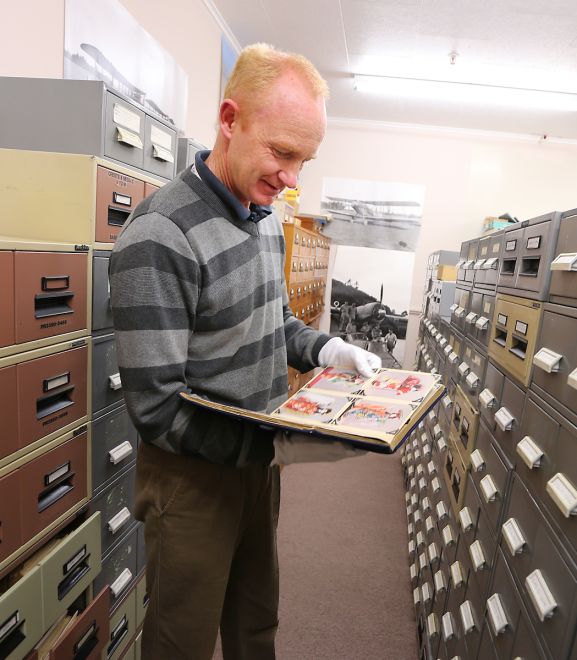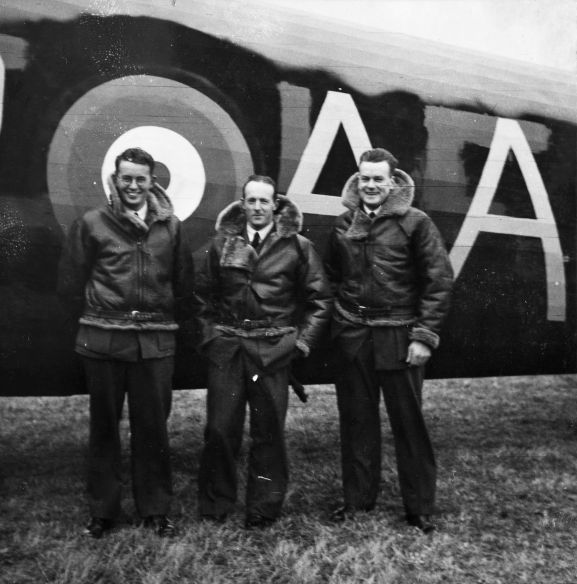As the Keeper of Photographs, I see a lot of photographs. A LOT of photographs. Many are simply digitised, catalogued and processed without a second thought. Many of them would be of interest to individuals with their own specific research projects. However, with time pressing and in a sole-charge position, all I can do is make it as accessible as possible and let fate lead researchers to the right image.

Sometimes a photograph jumps out at you and not always for obvious reasons. This photograph shows three happy No. 75 (NZ) Squadron RAF pilots standing beside one of their aircraft. There are many photographs like this one and there are even better photos available of No. 75 Squadron Wellingtons.

So, what’s so special about this photo? Why should I focus on this relatively modest photograph? Well, I always say “look at the background.” This can often give clues to location, date or other useful information when cataloguing, but this photo has no background!
The image shows No. 75 Squadron pilots Jim Falconer, Leonard Hewitt and George Key in late 1940, almost certainly at RAF Station Feltwell. But look at the aircraft. Doesn’t it look a bit scruffy? The code letters for No. 75 Squadron, ‘AA’ can be clearly seen, however, they’ve been painted over the identity letters of another squadron. Aircraft were often transferred between operational squadrons and the over-painted letters look like ‘LF’, the letters of No. 37 Squadron RAF. It’s known that several aircraft came to No. 75 Squadron from No. 37 Squadron and I also know that at the end of 1940 both were based at RAF Feltwell. In November 1940 No. 37 Squadron were sent to Malta, and subsequently, on to North Africa.
Note too, the roundel; the yellow outer ring has been reduced in width, changing it from an A1 to an A2 roundel and some of this paint is showing the original yellow underneath. The aircraft itself is wearing the standard RAF colour scheme for bombers of the time; camouflaged upper surfaces and black sides and under-surfaces.
This photograph shows the haste in which some of these colour scheme changes were made. In a busy and worrying period of World War Two, the priority was on keeping aircraft operational, not trying to keep them looking ‘nice’.
Postscript:
L.R. Hewitt, from whose album this photo came, was later posted to No. 37 Squadron in North Africa in 1942. Arthur Falconer (left) went missing without a trace only a few months later, on the night of 21/22 February 1941.





